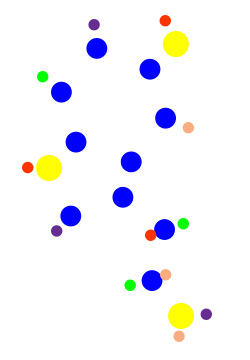The Maillard Reaction
/The Maillard reaction, first described in 1912, is a complex network of reactions, that starts with a reducing sugar, such as glucose, and an amino residue with a protein.
Step 1: Condensation of an aldose reducing sugar, such as glucose, with an amino group within the R-group an amino residue of a protein, for example a lysine residue.
Step 2: The product of the glycation reaction in Step 1 is an unstable aldimine that will spontaneously rearrange into a more stable ketoamine, also known as the Amadori product. If the starting reducing sugar is glucose, the Amadori product is fructoselysine.
Step 3: The Amadori products can then degraded by different pathways that can depend on the pH (acidic pH favours formation of furfurals while a basic pH results in the formation of reductones), or can be oxidatively decomposed to a wide range of reactive carbonyl and dicarbonyl compounds.
Step 4: The Strecker degradation of these reactive carbonyl and dicarbonyl compounds result in Strecker aldehydes, and aminoketones that condense to form pyrazines. It is the Strecker aldehydes and the pyrazines that contribute to the aroma of food as they are heated.
Step 5: Aldol condensation of the furfurals, reductones, and Strecker aldehydes formed from Step 3 & 4 then occurs with or without amino compounds resulting in polymers called melanoidins. It is these that contribute to the colour of food (browning).
The Maillard reaction products can lead to the formation of the carcinogen acrylamide. The amount of these depends on the way the food is processes and pH. It also can depend on the amino acid and reducing sugar. For example, condensation of asparagine with glucose results in an N-glycoside, and decarboxylation and heterolytic cleavage of the nitrogen-carbon bond produces acrylamide.
If you enjoyed reading this, please like, share or leave a comment.
References:
Rydberg, P., Eriksson, S., Tareke, E., Karlsson, P., Ehrenberg, L., Rornqvist, M. (2005). Factors that influence the acrylamide content of heated foods. Adv Exp Med Biol. 561, pp. 317-328. PubMed Abstract
Stadler, RH., Blank, I., Varga, N., Robert, F., Hau, J., Guy, PA., Rober, MC., Riediker, S. (2002). Acrylamide from Maillard reaction products. Nature, 3; 419 (6906), pp. 449-50. PubMed Abstract
Zhang, Q., Ames, JM., Smith, RD., Baynes, JW., Metz, TO. (2009). A Perspective on the Maillard Reaction and the Analysis of Protein Glycation by Mass Spectrometry: Probing the Pathogenesis of Chronic Disease. J Protemome Res. 6; 8(2): pp. 754-769. PubMed Article


